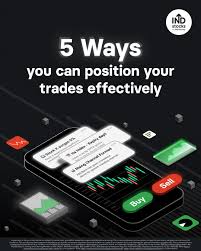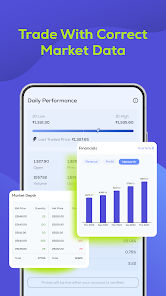Having bad credit can make it challenging to secure financial assistance, but it doesn’t necessarily mean you’re out of options. If you find yourself in need of immediate funds and are struggling with a poor credit score, a quick loan for bad credit could be a solution to consider. These types of loans provide a fast and simple way to get the cash you need, even with a less-than-ideal credit history.
In this, we will explore how quick loans for bad credit work, the approval process, and how you can benefit from these loans when you need immediate financial relief. Whether you’re looking for a small cash loan to cover an emergency or a larger loan for more significant expenses, understanding your options can help you make an informed decision.
What Are Loans for Bad Credit?
Loans for bad credit are designed to provide financial assistance to individuals with poor credit scores. While traditional loans from banks and credit unions often require a high credit score, loans for bad credit are more flexible, offering approval to those who may have a history of late payments, defaults, or other credit issues.
These loans typically have less stringent eligibility criteria, making them an accessible option for people in difficult financial situations. There are different types of bad credit loans, including personal loans, payday loans, and installment loans. Depending on your financial needs, you can choose the loan type that suits you best.
How Do Quick Loans for Bad Credit Work?
Quick loans for bad credit are a straightforward and fast way to secure financial assistance. The process is designed to be simple, with minimal paperwork required, and most lenders provide an online application that allows you to apply from the comfort of your home. These loans are typically unsecured, meaning you don’t need to put up collateral such as a car or home to secure the loan.
Once you apply for a cash loan, the lender will assess your creditworthiness based on factors beyond just your credit score, such as your income, employment history, and debt-to-income ratio. This makes quick loans more accessible to those with poor credit scores. If approved, funds can often be deposited into your bank account within a short period, sometimes even within a day or two.
Types of Quick Loans for Bad Credit
There are several options available when it comes to quick loans for bad credit. Some of the most common types include:
1. Personal Loans for Bad Credit
A personal loan for bad credit is typically an unsecured loan that can be used for a variety of purposes, such as paying off debt, covering medical expenses, or handling unexpected costs. These loans offer flexibility in terms of repayment schedules and loan amounts, making them a popular choice for individuals with bad credit. However, keep in mind that the interest rates on personal loans for bad credit may be higher than those for individuals with good credit.
2. Payday Loans
Payday loans are short-term loans that are designed to be repaid quickly, often by your next payday. They are typically smaller in amount and come with higher interest rates. Payday loans can be a good option if you need a small cash loan to cover an urgent expense, but they should be used cautiously due to their high fees.
3. Installment Loans
Installment loans for bad credit are similar to personal loans but are repaid over a longer period, usually in fixed monthly installments. These loans are often used for larger expenses, such as home repairs or medical bills, and provide the borrower with more time to repay the loan. While the interest rates on installment loans for bad credit may be high, the extended repayment period can make the loan more manageable.
Advantages of Quick Loans for Bad Credit
Quick loans for bad credit come with several benefits, particularly for individuals who may struggle to access traditional forms of credit. Some of the key advantages include:
1. Simple Approval Process
The approval process for quick loans for bad credit is usually much simpler than traditional loans. Lenders typically focus on your current financial situation, rather than just your credit score, which means individuals with poor credit can still qualify for financial assistance. The fast approval process allows you to receive funds quickly, often within a day or two.
2. No Collateral Required
Many quick loans for bad credit are unsecured, meaning you don’t need to risk valuable assets like your home or car to secure the loan. This makes them a less risky option for those who don’t have collateral to offer.
3. Quick Access to Funds
One of the most significant benefits of quick loans for bad credit is the speed at which you can access funds. Lenders understand that financial emergencies can happen at any time, and they aim to provide fast relief by processing applications quickly and disbursing funds as soon as possible.
4. Flexible Loan Amounts and Repayment Terms
Quick loans for bad credit are often flexible in terms of the loan amount and repayment schedule. Whether you need a small cash loan to cover an unexpected expense or a larger loan for more significant financial needs, you can find options that suit your situation. Additionally, many lenders offer flexible repayment terms, allowing you to manage your loan payments more easily.
How to Apply for a Quick Loan with Bad Credit
Applying for a quick loan for bad credit is typically a simple process. Here’s what you need to do:
Step 1: Check Your Credit Score
Although quick loans for bad credit don’t focus solely on your credit score, it’s still a good idea to know where you stand. This will help you understand your options and what lenders might expect from you. Many lenders will look at your credit score, income, and overall financial situation to determine eligibility.
Step 2: Compare Loan Options
Not all quick loans for bad credit are the same. Be sure to shop around and compare different lenders to find the best loan terms for your needs. Pay attention to interest rates, fees, and repayment schedules to ensure that the loan is affordable for you.
Step 3: Fill Out the Application
Once you’ve found a lender that offers the right terms for you, fill out the loan application. This will typically include personal details, information about your income, and possibly some documentation to verify your financial situation. Many lenders now offer online applications, making it quick and easy to apply from anywhere.
Step 4: Wait for Approval
After submitting your application, the lender will review your information and determine whether you qualify for a loan. With quick loans for bad credit, approval can be fast—sometimes within minutes—so you don’t have to wait long for a decision.
Step 5: Receive Your Funds
If you’re approved, the lender will typically deposit the funds into your bank account within a short period, often as quickly as the same day. This makes quick loans for bad credit a great option for individuals who need cash immediately.
Conclusion
Quick loans for bad credit can offer a lifeline for individuals who are struggling with poor credit but need access to cash. These loans provide a fast and simple approval process, allowing you to secure funds when you need them the most. Whether you opt for a personal loan, payday loan, or installment loan, there are options available to help you manage your financial needs.
If you’re considering a cash loan, it’s important to carefully evaluate your options and choose a lender that offers competitive terms, reasonable interest rates, and flexible repayment options. With the right quick loan for bad credit, you can address urgent expenses and work toward improving your financial situation.







